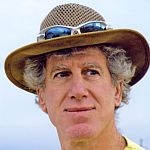 (HOST) Snowy days are a good time to curl up with a good book. Commentator Ted Levin says he’s been exploring a new account of a story from the American West that is a potent combination of both myth and legend.
(HOST) Snowy days are a good time to curl up with a good book. Commentator Ted Levin says he’s been exploring a new account of a story from the American West that is a potent combination of both myth and legend.
(LEVIN) Tom Powers’ new book, The Killing of Crazy Horse, is both a departure from his previous books about intelligence organizations and a fresh look at the Indian Wars on the Northern Plains. It took fifteen years to complete this dense and provocative tome. While he was writing it, the South Royalton author made so many trips out West that he kept a car in Colorado for easier access to the plains.
Like Powers, I grew up in the 1950s, and imagined myself a suburban frontiersman. I read Quentin Reynolds’ Custer’s Last Stand and immediately placed the Little Bighorn Battlefield high on my nascent Bucket List. Twenty years later, when I arrived at the National Historic Site, I discovered the Northern Plains were anything but flat. Steep, narrow drainages called coulees were the physiographic counterpoint to Vermont’s rolling hills and spacious valleys, and the grass – unlike that of the rumpled prairies of Iowa – was short like a military haircut.
Visitors have had a history of geographic disorientation on these Plains – a phenomenon that helps explain how more than a thousand Sioux and Cheyenne warriors, encouraged by the dynamic leadership of Crazy Horse, could have hidden themselves, then surprised, and finally slaughtered George Armstrong Custer’s entire command in 1876. Unlike Custer, Crazy Horse survived the battle, but not for long.
Powers contends that it’s really the death of Crazy Horse in 1877 that gives the Indian Wars a narrative backbone. Powers writes, "Nothing quite opens up history like an event – the interplay of a large cast pushing a conflict to a moment of decision." He continues, "Dead Indians are a common feature of American history, but the killing of Crazy Horse retains its power to shock."
The murder of the legendary Sioux warrior once rendered as a historic footnote or afterthought, was, as Powers’ makes clear, a political assassination. General George Crook is the book’s darkest character – of which there are many, both red and white. He had been defeated by Crazy Horse at the battle of the Rosebud nine days before the Custer debacle. Crook feared the Sioux warrior and wanted to protect his own place in history. For more than year, the general fumed over his embarrassing defeat and finally resolved to reverse his fortunes.
Cobbled mostly from new material – letters, unpublished manuscripts, and interviews, verbal heirlooms shared by descendants of Crazy Horse’s friends and enemies – Powers highlights a conspiracy between Crook and thirteen leading Oglala Sioux to kill Crazy Horse. Crook’s chief of scouts, in fact, offered $200 and his best horse to whichever Indian did the deed.
Powers reminds us that the "Indian wars were about land, and specifically about the removal of Indians from land whites wanted." And he concludes that the killing of Crazy Horse was perhaps the most unethical bargain in the sordid history of the American West. Quentin Reynolds tells part of the story of Custer’s Last Stand. Tom Powers tells the rest.